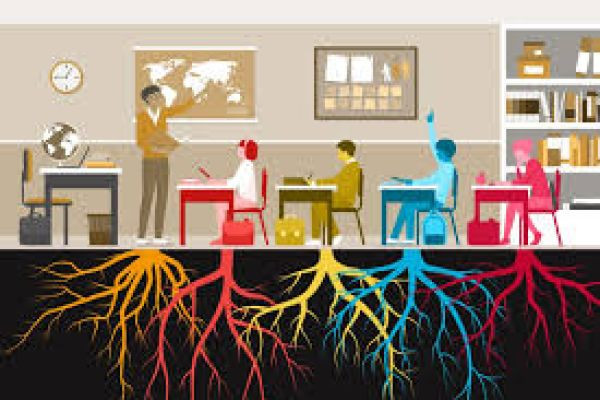Pedagogy: The Art and Science of Teaching Methods and Practices
Introduction
Pedagogy, the art and science of teaching methods and practices, is a dynamic and multifaceted field that encompasses a wide range of approaches to education. It involves the study and application of various teaching strategies, learning theories, and instructional techniques to enhance the learning experience. Pedagogy is not just about delivering content; it’s about fostering an environment where learners can thrive, engage deeply with the material, and develop critical thinking and problem-solving skills. In this essay, we will explore the core aspects of pedagogy, including its theoretical foundations, practical applications, and evolving trends.
Theoretical Foundations
Pedagogy is rooted in several key educational theories that guide teaching practices and inform our understanding of how learning occurs. One of the foundational theories is **constructivism**, which posits that learners construct their own understanding and knowledge of the world through experiences and reflecting on those experiences. This theory, associated with figures like Jean Piaget and Lev Vygotsky, emphasizes the importance of active learning, where students are encouraged to explore, question, and engage with the material actively.
Another influential theory is behaviorism, which focuses on observable behaviors and the ways in which they can be shaped through reinforcement and punishment. Pioneered by scholars such as B.F. Skinner, behaviorism highlights the importance of clear, measurable outcomes and systematic instruction. While behaviorism has been critiqued for its limited focus on internal cognitive processes, it remains relevant in contexts where specific skills and knowledge need to be acquired.
Cognitive theories, such as those proposed by Piaget, delve into the mental processes involved in learning. These theories explore how cognitive development influences the way learners process information and solve problems. Understanding these cognitive processes helps educators design instruction that aligns with learners’ developmental stages and cognitive capacities.
Socio-cultural theories, developed by Vygotsky, emphasize the role of social interactions and cultural context in learning. Vygotsky’s concept of the Zone of Proximal Development (ZPD) illustrates the difference between what learners can do independently and what they can achieve with guidance. This highlights the importance of scaffolding—providing support and guidance to help learners achieve higher levels of understanding.
Practical Applications
Effective pedagogy involves translating these theoretical principles into practical teaching methods and strategies. One of the most widely used pedagogical approaches is active learning, which encourages students to engage directly with the material through activities such as group discussions, problem-solving exercises, and hands-on projects. Active learning shifts the focus from passive reception of information to active participation, fostering deeper understanding and retention of knowledge.
Differentiated instruction is another key pedagogical strategy that acknowledges the diverse needs and learning styles of students. By tailoring instruction to accommodate different learning preferences, abilities, and interests, educators can create a more inclusive and effective learning environment. This might involve using various instructional materials, adjusting the pace of instruction, or providing alternative ways for students to demonstrate their understanding.
Inquiry-based learning is an approach that encourages students to ask questions, conduct investigations, and seek solutions. This method promotes critical thinking and problem-solving skills by placing students in the role of active researchers. Inquiry-based learning often involves collaborative work, where students explore real-world problems and develop solutions through research and experimentation.
Formative assessment plays a crucial role in effective pedagogy by providing ongoing feedback that helps both teachers and students understand how well learning objectives are being met. Unlike summative assessments, which evaluate student learning at the end of an instructional period, formative assessments are conducted throughout the learning process. They provide valuable insights into students’ progress and areas that need improvement, allowing for timely adjustments to teaching strategies.
Technology Integration
In the 21st century, technology has become an integral part of pedagogy, offering new tools and resources for teaching and learning. Educational technology includes a wide range of digital tools such as learning management systems (LMS), interactive whiteboards, and online resources. These technologies can enhance instruction by providing interactive and multimedia content, facilitating collaboration, and enabling personalized learning experiences.
Blended learning is an approach that combines traditional face-to-face instruction with online learning. This model allows students to benefit from both in-person interactions and the flexibility of online resources. Blended learning can support differentiated instruction by offering various digital tools and resources that cater to different learning needs and preferences.
Gamification is another trend that leverages game design elements to enhance learning. By incorporating elements such as points, badges, and leaderboards, educators can make learning more engaging and motivating. Gamification can be particularly effective in promoting student participation and persistence in challenging subjects.
Evolving Trends
Pedagogy is an ever-evolving field, influenced by advancements in research, technology, and societal changes. One notable trend is the shift toward student-centered learning, which prioritizes the needs, interests, and preferences of learners. This approach contrasts with traditional teacher-centered models, where the teacher is the primary source of knowledge and authority. Student-centered learning emphasizes collaboration, self-directed learning, and the development of critical thinking skills.
Social-emotional learning (SEL) has also gained prominence as educators recognize the importance of addressing students’ emotional and social needs. SEL programs aim to help students develop self-awareness, empathy, and interpersonal skills, which are essential for academic success and overall well-being.
Global perspectives in pedagogy reflect the increasing interconnectedness of the world. Educators are increasingly incorporating global issues and diverse perspectives into the curriculum to prepare students for a globalized society. This includes promoting intercultural understanding, addressing global challenges, and fostering global citizenship.
Conclusion
Pedagogy, as the art and science of teaching methods and practices, is a complex and multifaceted field that encompasses a range of theories, strategies, and trends. It involves understanding how students learn, designing effective instructional practices, and adapting to the evolving needs of learners. By integrating theoretical insights with practical applications, and by embracing emerging trends and technologies, educators can create meaningful and impactful learning experiences that prepare students for success in an ever-changing world.



